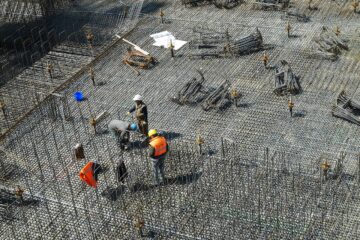![]()
Facts:
The respondent was a nurse working at a government hospital in Goa. She has complained of having trouble with abdominal pain in 1993. The doctors in there advised her to consult with Dr. V.N. Shrikhande (appellant) residing in Dadar, Mumbai, having a hospital. After examining the pathologist’s report the appellant performed an Open Cholecystectomy on 26.11.1993 and thereafter revealed the respondent had stones in her Gall Bladder. After the surgery on 30.11.1993, the respondent was discharged from the appellant’s hospital on 30.11.1993. The respondent suffered from abdomen pain off and on after the surgery. For 9 years for which she continued with pain killers.
On 23rd September 2002, The respondent had a C.T of her abdomen. A well-defined rounded mass in the left lobe of the liver was discovered. The respondent was further admitted in Lilavati Hospital at Bombay and was operated by Dr. P. Jagannath dated 25.10.2002. After the treatment, the diagnosis said gauze pieces; within a mass in the upper central abdomen region viscid to the liver. On receiving the report of histopathology.
The respondent demand compensation the appellant on the grounds of his negligence. As gauze was left in her abdomen during the surgery done 1993. Because of it the respondent had to undergo another surgery in Lilavati hospital; causing her a loss of not only finances but also caused physical and mental stress to her and her family. The appellant highlight that in the 50years of his career; where he perform numerous operations there had never been such an allegation.
He also claimed that at the discharge of his every patient he asked him/her that if they ever dealt with any problem. They should contact him but in case of the respondent, she never briefed him about her problem. On failing to receive a positive response about the compensation from the appellant. She filed a complaint under Section 17 of the Consumer Protection Act, 1986. She pleaded she had to suffer for all9 years endlessly and finally had to undergo another surgery costing her Rs. 1,28,522/-. The respondent further plead that it was deliberately caused by the appellant’s negligence. He had acted with due care and caution, this harm could have been avoided. On 17.03.2006, the State Commission dismissed the complaint. As imped by time on the ground as the complaint was made 9 years later.
The Consumer Protection Act, 1986 in section 24-A(1) & (2) allows for a Limitation period of two years for filing a complaint. The rule of discovery was emphasized and stated she had no reason to suspect that gauze might have been left in her abdomen at the time of surgery performed in November 1993. The counsel of the respondent argued that the claim lodged by the complainants in that scenario involved acts of medical negligence which were getting defeated by strict adherence to the statutes of limitation.
Rule Of Law
Consumer Protection Act, 1986: The introduction of COPRA in the year 1986 wasn’t only to protect the interest of the consumers. But also to safeguard their rights as well. It provided a multidimensional approach to promote consumer interests which included spreading od awareness and establishment of consumer councils. This also helped the consumer to resolve their stumbling block and ensured a faster way for redressal.
The Consumer Protection Act, 1986 in section 24-A(1): A complaint shall not be admitted by The District Forum, the State Commission or the National Commission if it is not filled within 2years of the given incident.
The Consumer Protection Act, 1986 in section 24-A (2): The District Forum, the State Commission or; the National Commission will only allow a complaint given that; the assurance that the liable person had a valid reason for not doing so with the stipulated period.
The rule of discovery: It is a rule in the law of that saying the statute of limitations for a cause of action shall not begin. Till the time the injured party suffers from a reasonable injury.
Held
Negligence is simply the failure to exercise due care and also the lack of ethical and reasonable care that should be exercised specified happenings. The three components of negligence are as follows:
- The defendant owes a duty of care to the plaintiff.
- The defendant has breached this duty of care.
- The plaintiff has suffered an injury due to this breach.
It was held that in cases of medical negligence there is no straitjacket formula to determine as to; when the cause of action has arisen to the consumer. The respondent has not been able to give a clear explanation of why she had not communicated with her doctor; for the past 9 years in case of such agony and pain. The long silence on her part counters with the bonafide of the respondent’s claim for compensation and the Discovery Rule cannot be invoked for recording a finding that the cause of action accrued to her in November 2002. Hence, the impugned order was set aside and the respondent’s complaint was dismissed. The appeal is allowed and The parties are left to bear their costs.
Conclusion
Cases regarding the medical field do take place in our country and cases against doctors, nurses, and hospitals are the most difficult and complex lawsuits. It is very crucial to acknowledge that it’s not about the punishment or apols but to recover monetary compensation for victims of negligent actions. Members of Hon`ble judiciary are requested to differentiate between a case of negligence and error-full professional decisions before reaching to any further conclusions. The priority in such scenarios depends on the negligence on the doctor’s part or any person associated with him, then the cause of action is set to arise on the day the neglect act was committed. But if the cause of action is quiescent then the cause of action will arise on the date when the person discovers the harm or injury caused to him.



0 Comments